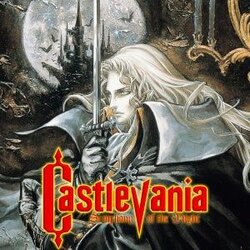So I learned something neat and I wanted to share it. And it actually involves a game I beat on my channel, Dracula X.
My relationship with this game has always been a tad.... Adversarial, in no small part because of some really frustratingly shit level design, specifically in Level 3 and in the last two boss fights.
The game isn't exactly what I would call bad - there's at least four CV games that I have played and would consider worse (Adventure, Legends, Haunted Castle, and Vampire Killer) - and its music is great, but it being a kind of mid port of a
vastly better game never sat well with me.
As it turns out, the game has a much more interesting - and tragic - story behind it. Dracula X was not intended, at least initially, to be a semi-port of Rondo of Blood. Instead, it was originally developed, according to some articles I read from the time, as a Sequel to Rondo, and one of the biggest games yet for the SNES. At least, that was the concept. You can can actually find a few screenshots from dev interviews back then, showing environments that are clearly not Dracula X's current ones and also obviously not repurposed Rondo assets. By all accounts, they got about 70% or so of the way through their dev build and the project was going comparatively well. It was intended to be a free-roaming CV game similar to 2, but with you exploring the whole castle.
Unfortunately, at this point, the 1995 Kobe Earthquake hit. Konami's main dev office working on the project (among several other Konami titles in development) was turned into a fucking crater. Konami lost
everything they were working on due to this. With a hard deadline coming up fast, and a few extracted assets left over from the attempt to port some of the graphics and audio to the SNES, they cobbled together everything they had into what was essentially a watered down port. It was all they could do.
Those more familiar with Koji Igarashi, however, would know that the man
does not accept defeat lightly, and when he's been thwarted on a title in the past, he has a tendency to come back strong and try to finish it proper later - something he did with Castlevania 64 (the result was Legacy of Darkness, which I consider an unsung gem) and Harmony of Dissonance (which I discussed earlier; the result was Aria of Sorrow). So when this happened, predictably, he went back to the drawing board to complete the game the way he always intended.
Two years later, he'd get his chance. Ultimately, this game was rushed a bit too, but it hardly mattered, as the result was one of the most beloved Castlevania games of all time:


